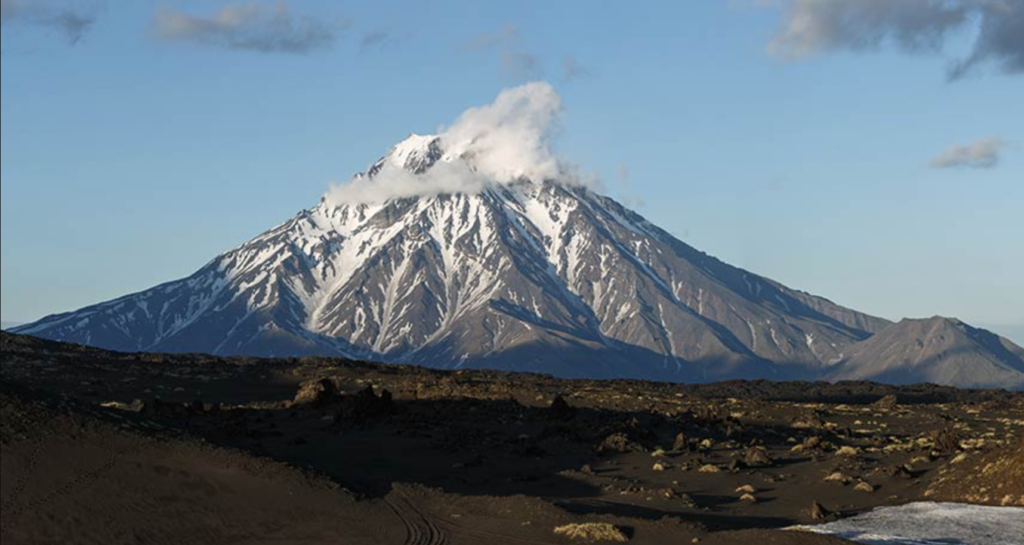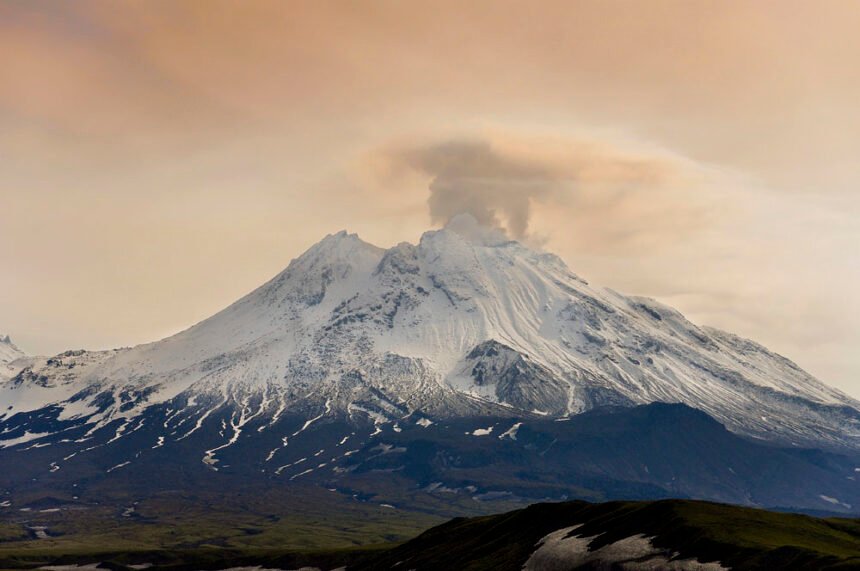Kamchatka, a remote and rugged peninsula in Russia’s Far East, is a land of extraordinary natural wonders. Among its most captivating features are the numerous active volcanoes that punctuate its landscape. These restless giants have been shaping the region for millennia, and their fiery displays continue to awe and inspire scientists, adventurers, and nature enthusiasts from around the world. In this article, we’ll delve into the mesmerizing world of Kamchatka’s volcanoes and explore their history, significance, and ongoing eruptions.
The active Kamchatka Peninsula in Russia produced a striking display of steam, snow, and shadows

Mid-October 2023 saw neighbouring volcanoes on Russia’s Kamchatka Peninsula erupt. On October 16, the Operational Land Imager (OLI) of Landsat 8 took this picture of an active eruption. As the Sun moved low in the autumn sky, the peaks created shadows on the snow.
ALSO READ :Magnificent View Of The Moon’s Shadow Cast Across The United States During The Annular Solar Eclipse
Klyuchevskoy’s Eruption

The tallest active volcano in Asia, the stratovolcano Klyuchevskoy (also known as Kliuchevskoi), is seen at the top of the picture. Its modest cloud of gas, steam and maybe some ash is wafting northeast. From the nadir (downward-looking) perspective, the mountain’s distinct conical shape and rising plume cast a shadow that gives the scene a three-dimensional appearance.The beginning of Strombolian eruptions at Klyuchevskoy was reported by the Kamchatka Volcanic Eruption Response Team (KVERT) in June 2023. A new lava flow was discovered on the southeast flank of the volcano in July. Over the next few months, there were other explosive eruptions. Gas and steam propelled varying amounts of ash skyward, sometimes raising the aviation colour code to orange, the third hue on a four-color spectrum. A greater volume of lava flowed down the volcano’s slopes in the days prior to the acquisition of this image, and flaming materials shot up to 300 metres (1,000 feet) above the crater lip.
Bezymianny’s Eruption and Overall Geological Drama

Bezymianny also erupted a volcanic plume more to the south, albeit it is more elusive in this view because to the cloud bank. On October 16, when ash was blasted roughly 70 kilometres (45 miles) northeast of the volcano and debris avalanches raced down the lava dome’s slopes, KVERT recorded an increase in activity at this volcano.Located along the Pacific Ring of Fire, the Kamchatka Peninsula is a land of volcanoes, home to more than 300 of them. The frequently active Klyuchevskaya range, part of which is shown in the image above, is a common locale for geological drama visible from space. A photo taken by an astronaut on the International Space Station, for example, captured hints of recent eruptions from both Klyuchevskoy and Bezymianny.
ALSO READ :Pangea Ultima: The Supercontinent That Could Wipe Out Nearly All Mammals




































